Op-eds are among the most controversial, widely read, and thoroughly scrutinized pieces of prose in the world’s news media, tackling big topics (college campus protests about the Israel/Hamas war, the felony trial of Donald Trump, U.S. support for Ukraine, or the future of TikTok, to name a few examples in spring 2024) on the big stages of the New York Times, the Wall Street Journal, the Washington Post, and other digital and print publications.
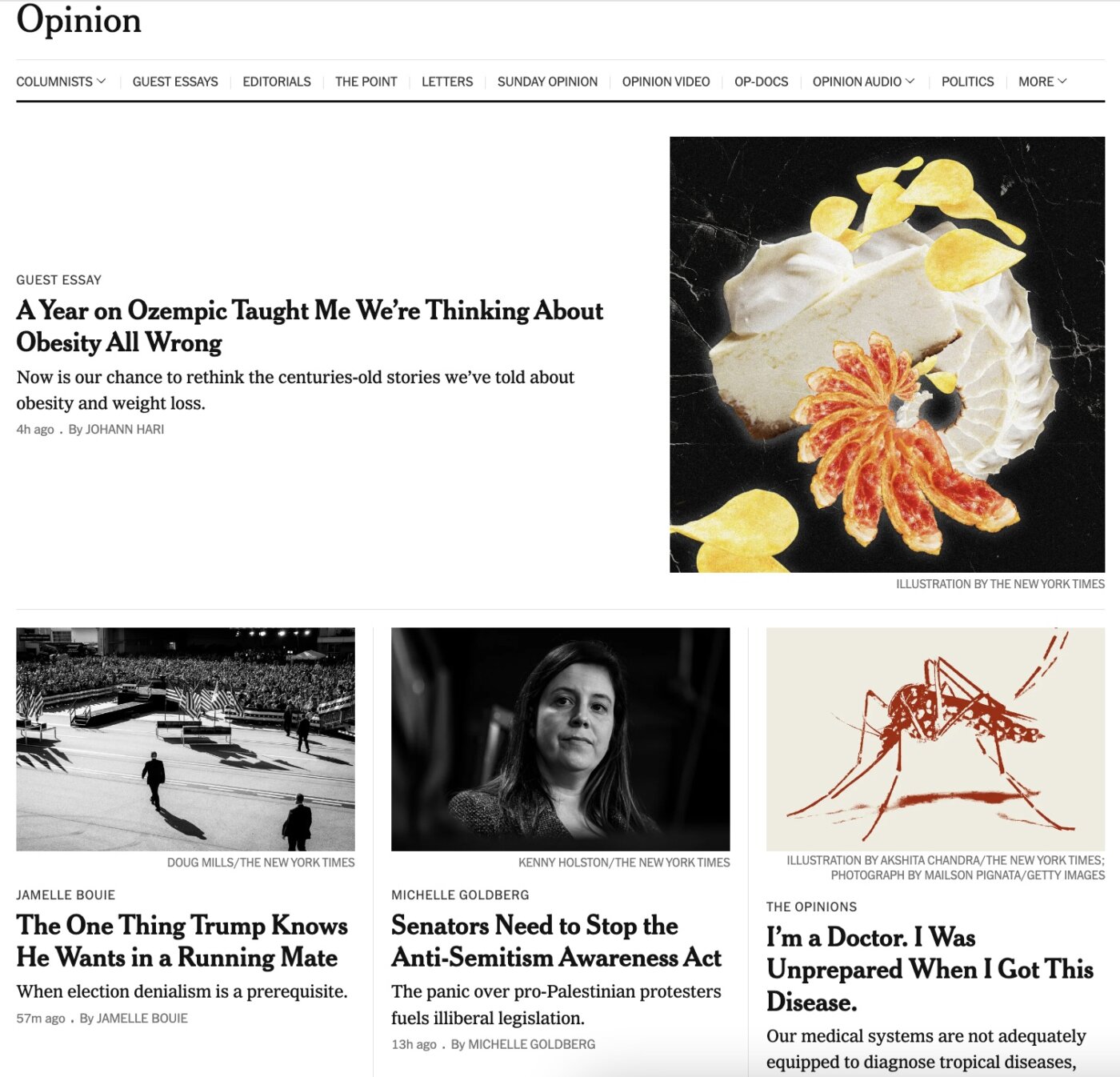
The best op-eds—so labeled because of their historical place “opposite the editorial” pages of leading newspapers—read like brief, opinionated rallying cries, drawing on historical research and data to stake a position and call for action. They address immediately pressing issues with a concise argument that anticipates potential criticisms. And they establish a writer’s distinct voice as a trusted source of authority—and probably make them a target for someone else’s op-ed, too.
This unique prose format, in other words, is an excellent vehicle for demonstrating and applying skills of rhetoric, citation, and persuasion, while going beyond straightforward historical or scientific analysis. Op-ed writers risk committing to paper a very personal answer to the central questions that motivate all such pieces: Why should we care? And can you prove it?
Last fall, Colorado Academy social studies teacher Dr. Ben Hoffman realized that the op-ed was a natural fit for his department’s Global Perspectives course, a long-standing cornerstone of the Upper School curriculum. The required, full-year offering for Ninth Graders is a world history survey that purposefully draws connections between the past and the present. Engaging with a variety of primary and secondary sources, students in Global Perspectives develop a sense of self and appreciation for cultural diversity, attain an understanding of social justice and human rights, and learn to cultivate ways to promote peace and action for a sustainable future.
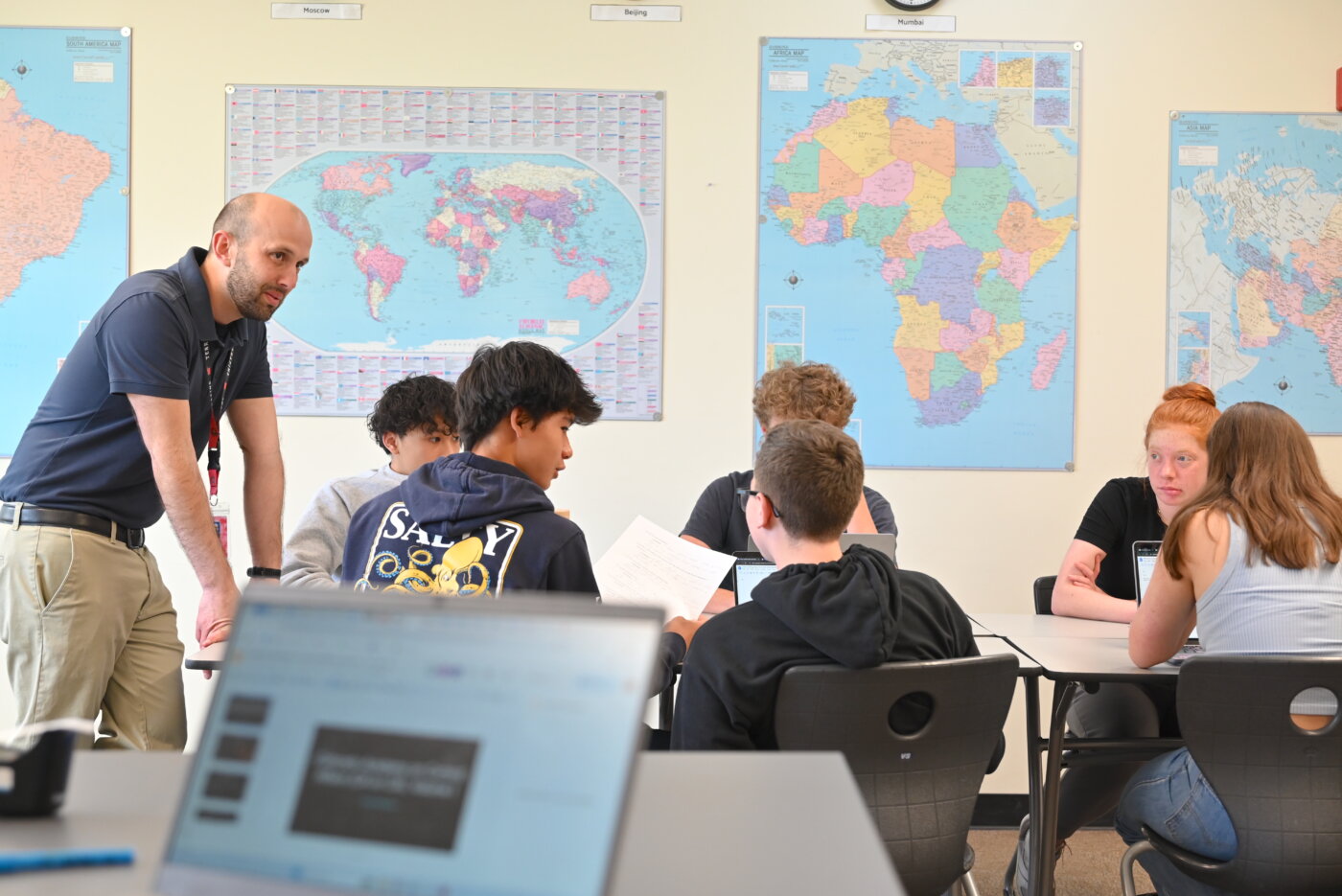
Global Perspectives, then, is precisely about enabling students to form their own views on issues and events of global significance, and in the op-ed format, explains Hoffman, students have the opportunity to research a topic of interest, develop an opinion about it, and then defend their position by deploying evidence through effective writing.
“Two major priorities stand at the fore in our Social Studies Department,” he says: “The vital role of civics in today’s world—teaching our students how to be active, informed citizens—and the importance of evaluating digital information so it can be trusted to support our beliefs. Both of these core skills are essential in creating an effective op-ed.”

“CA on CA”—Colorado Academy on Current Affairs—as Hoffman titled the new op-ed project, comes toward the end of students’ yearlong studies in Global Perspectives. Throughout the course, they have investigated guiding questions such as “What are facts?” and “When does violent conflict arise?” while pursuing cross-disciplinary inquiries into world historical forces, such as trade, colonization, religion, revolution, industrialization, and war since 1400.
Armed with this broad context, students then choose a contemporary issue to dig into more deeply for what will become a magazine-style collection of op-eds. This can be anything from the threats AI poses to fields such as music, medicine, and news, to the mystery surrounding the death of Russian opposition leader Alexei Navalny, to challenges facing the education sector in India. They are responsible for identifying trustworthy sources from which to draw information and then completing a “pitch” for an essay that meets the requirements of the typical op-ed: It must run to about 750 words, contain a “hook” to grab the reader, present a central argument, and conclude with a call to action.
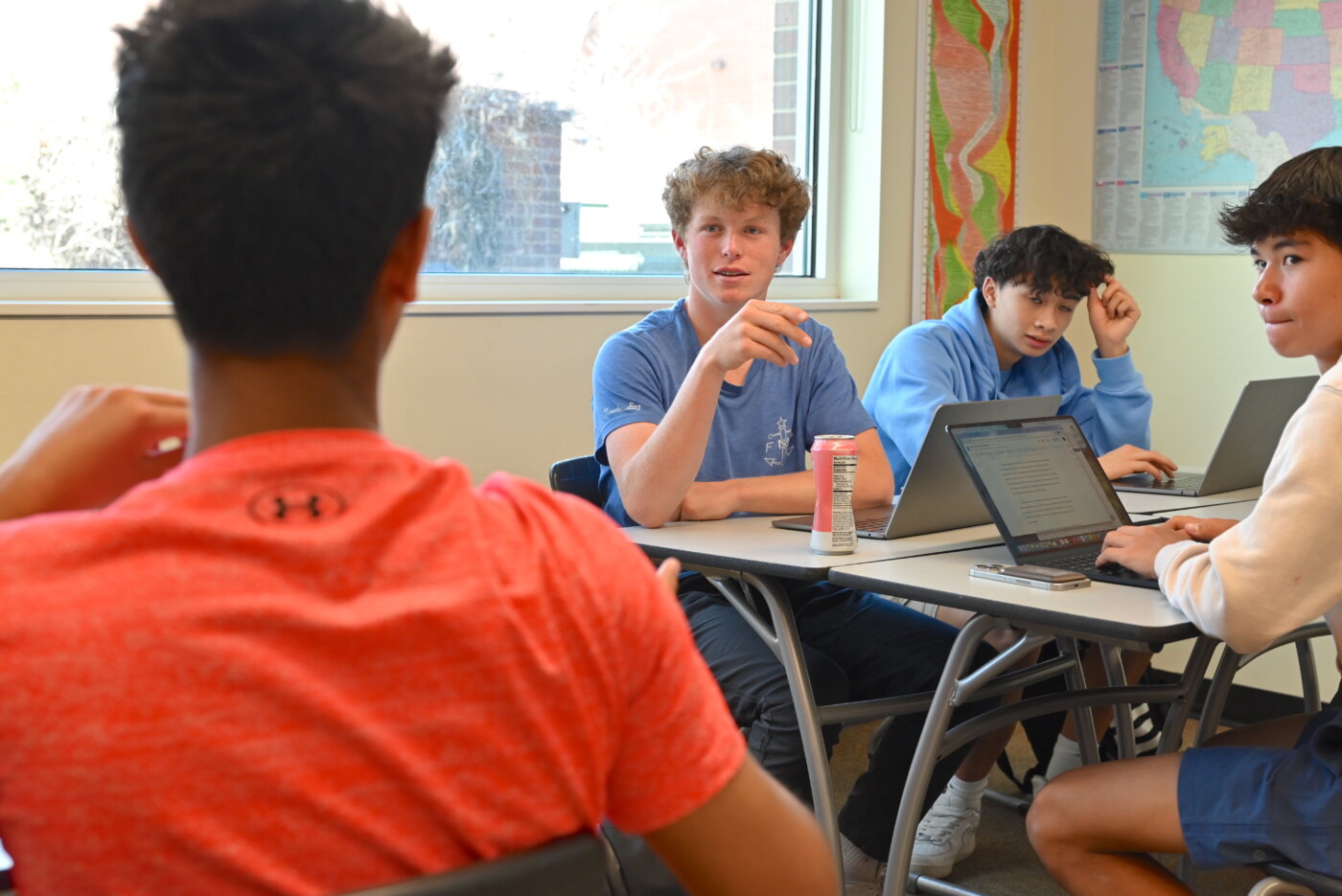
According to Hoffman’s colleague, Upper School social studies teacher Allison Gordon, “Probably the biggest skill we work on in Global Perspectives is forming an opinion based on solid research. Pitching an op-ed topic for an essay that will be read not just by the teacher but also by classmates and other peers raises the stakes beyond the typical assignment.”
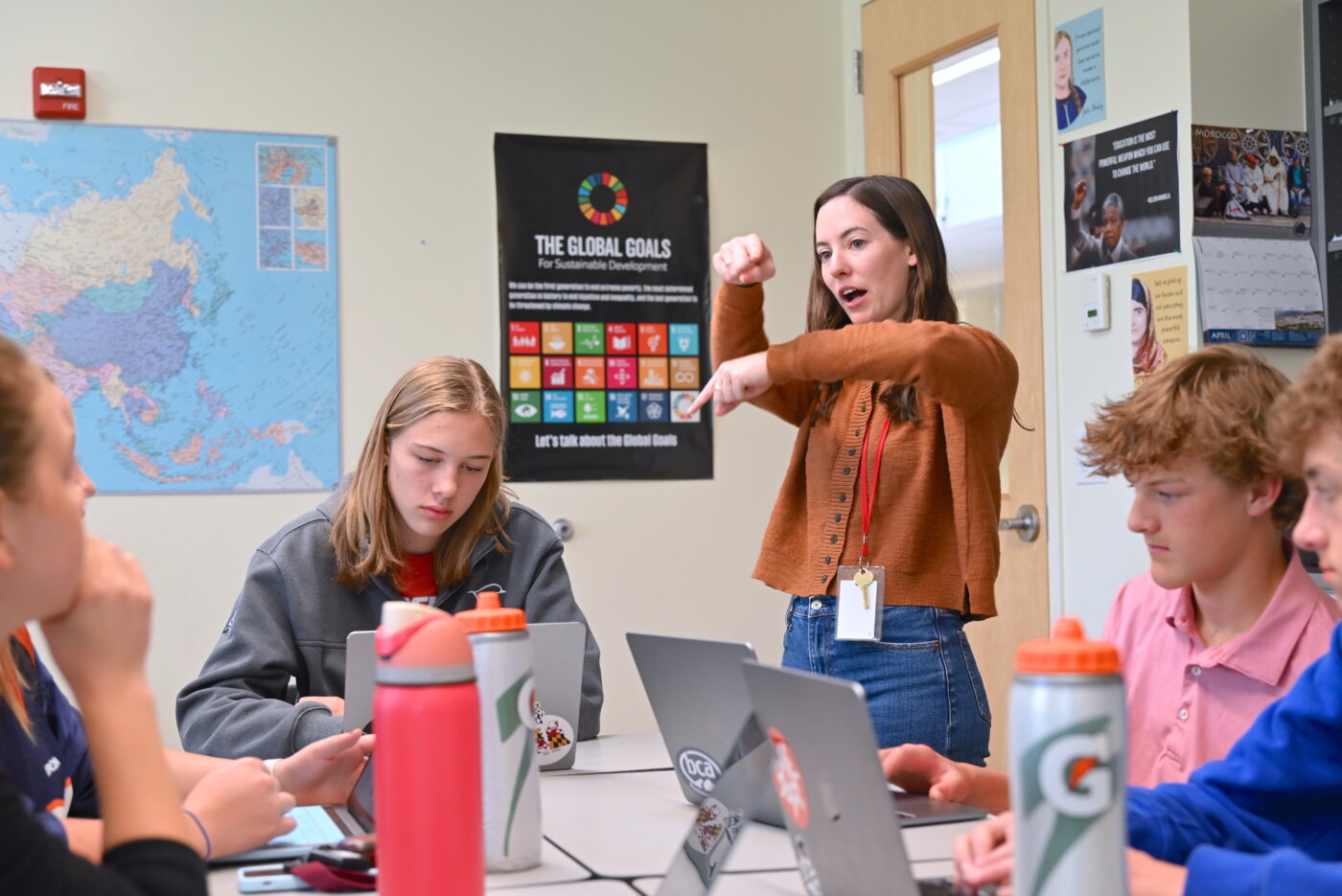
Adds Hoffman, “I thought it would be far more interesting for students to work in this specific format and not just task them with writing an essay of an arbitrary length and style. We could look at columns in the New York Times and other outlets to see how op-eds work and what makes them effective or not. They would have the chance to apply the skills they’ve learned throughout the course in a real-world way, about an issue they’re interested in.”
Making a magazine
But before any writing takes place, before Grade Nine’s volume of essays can come together, Hoffman and Gordon have their students take up all the roles that are necessary in designing a magazine. There are the columnists themselves, the wordsmiths putting their ideas on the line; the peer editors, who scrutinize the writers’ language and research; and the editor-in-chief and section editors, the four students who shape the magazine as a whole, ensure the columns fit thematically into the magazine’s three major sections (World Politics/Conflict, The Global Economy, and Culture & Society), and give articles appropriate headlines, illustrations, and introductions.
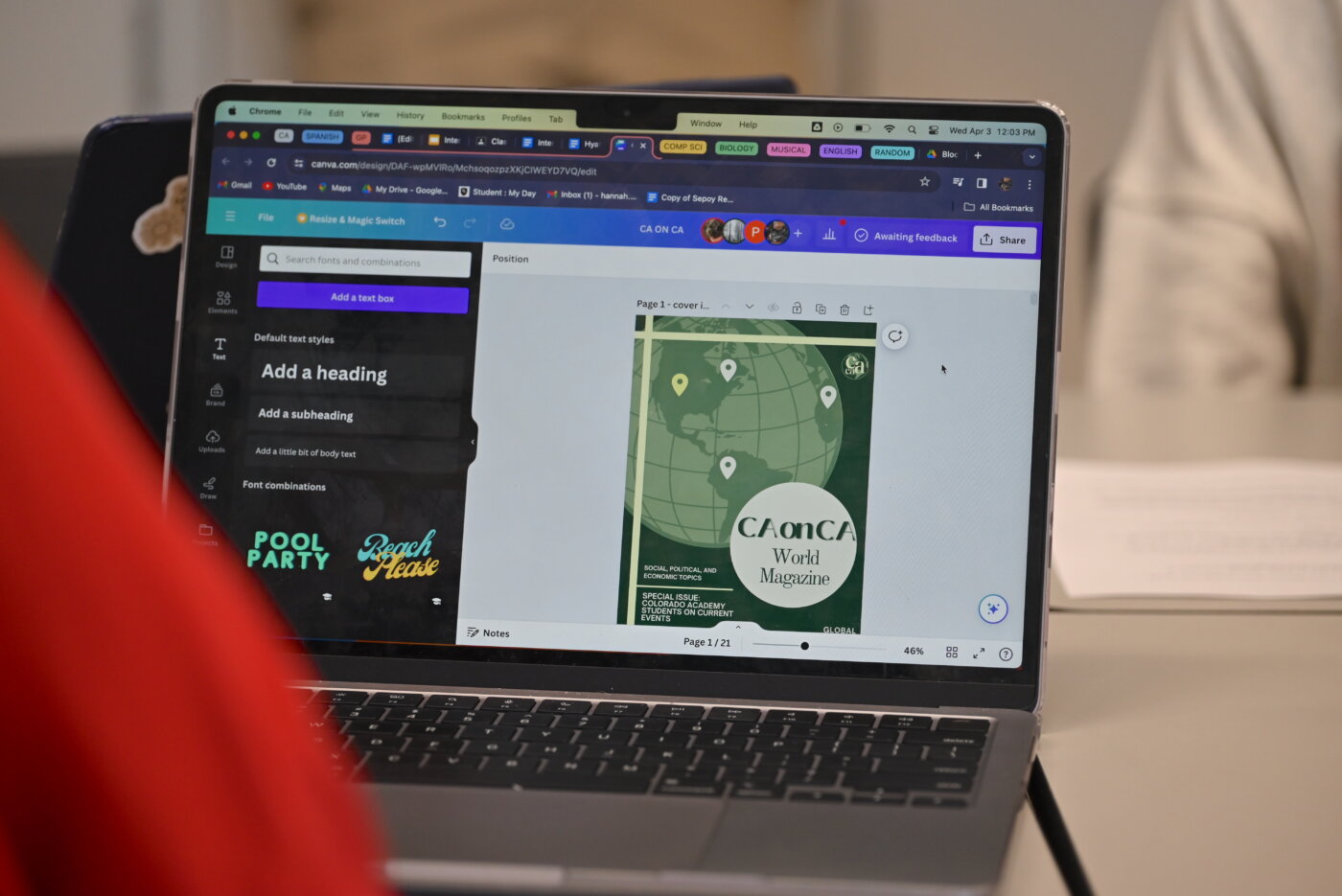
Framing the project in terms of a tangible publication, complete with a cover illustration, a table of contents, and an overall look that harmonizes fonts with colors and graphics, means students have to think not only about what to say, but also about how best to present it to an audience, says Gordon.
“They start to consider individual word choices and stylistic elements of the writing, the types of images they’re using, and even the background color on the page. Being able to persuasively communicate your ideas visually is one of those lifelong skills that’s transferable in so many different ways and disciplines.”

For section editor Mckenna Farrell, the opportunity to fine tune her peers’ work for the magazine turned out to inspire her creative side in an entirely new way. “I couldn’t really imagine what it would be like to write an op-ed, but being an editor made this a very creative project for me; it had a lot of depth to it, with everything you had to think about.”

Over the course of two weeks’ worth of class meetings, the collaborators use Google Docs to draft their columns, add comments and revisions to each other’s work, and respond to feedback from the editors and magazine “executives”—Hoffman and Gordon. They scour reputable information sources and databases available through the CA library for facts to support their arguments, building an annotated bibliography along the way. And, with the editor-in-chief taking the lead, they begin to turn a collection of text and images into a fully fledged magazine in Canva, the creative platform of choice in CA’s EdTech Department, whose Meghan Campagna visited class to help students with layout and design.

Kobe Glesser was intrigued by the recent Alexei Navalny case, and decided to write about it as a columnist. “I feel like I got really attached to my issue. This project really was a good conduit for finding reliable information on something where there’s so much disinformation about it.”
According to MJ Seitz-Yanez, “The whole point of Global Perspectives is to explore opinions. Through the op-ed project, we get to understand what’s going on in the world and then make our own educated argument about it.”
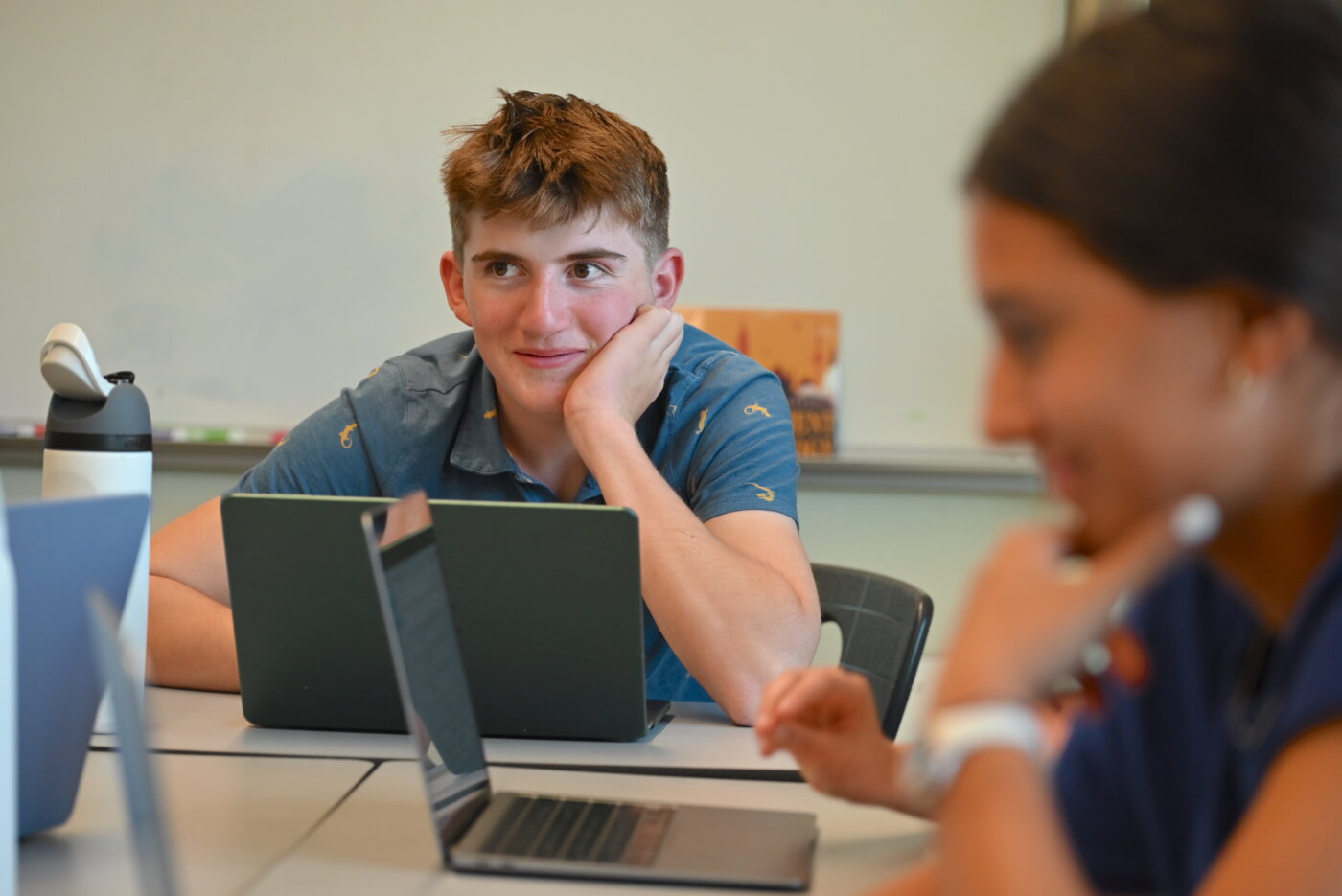
And Hannah Hyatt explains, “I really appreciate how unique this project is. I’ve never really done anything like it, and I think that it summed up most of the units that we’ve already been working on in the course. Allowing the authors to pick their own topic and do whatever they wanted to with it, and having the ability to use creativity and opinion to make our own magazine—it was just a really smart way for us to express our knowledge.”
What it means to “do history”
Ultimately, reports Hoffman, CA on CA spurred Ninth Graders to take their roles as authors, historians, citizens, and presenters very seriously—the student-driven process required them to actively “do history” and think about how their work applies beyond the classroom.
“I was impressed by the depth and complexity of some of the topics my students wanted to tackle,” adds Gordon. “In many cases they were looking back at a region that we had covered earlier in the year and then diving in deeper on topics that were more niche within those frames.”

Students in the class considered, for example, the current state of China-Taiwan relations, the impact of deforestation on Brazil’s economy, and a mental health crisis among American college athletes. And in the introduction to their Culture & Society section, one group of editors wrote, “Al impacts many things, including music and other art. New machines enable fast fashion, quick cheap production of clothing, increasing emissions and climate impact. A growing market for professional sports allows Saudi Arabia to hide their human rights violations and their economy based mainly on fossil fuels, a big emissions producer. Larger cruise ships create more emissions and hurt coral reefs and ocean creatures in the South Pacific. All are hiding, hurting, or helping something else.”

Another editor, concluding their issue introduction, argued, “These opinion pieces are written to not only spread awareness and educate readers about an issue that was of interest to the student, but also to make the readers of CA on CA think about pressing issues.”
Hoffman holds up the op-ed project as a reflection of the philosophy that guides the innovative teaching that defines CA’s Social Studies Department.

“Instead of history or social studies being a passive discipline, we demonstrate that it’s something that young people can actually use, that has relevance to our lives today, and that can actually make an impact in the world.”
For Jay Bhandari, who investigated possible solutions to the problems with India’s education system, that lesson came through loud and clear. “Instead of just learning about historical moments that we can’t do anything about, we got to apply what we learned to something that we can take action on today.”
